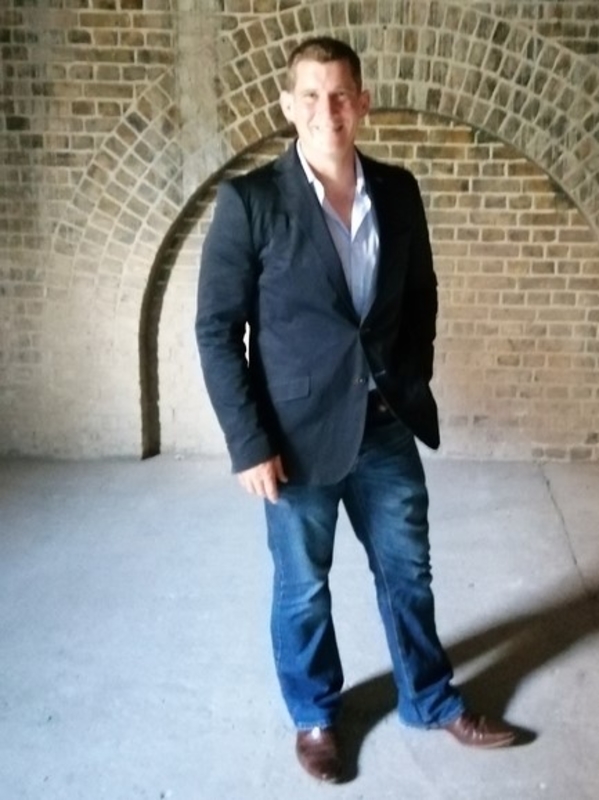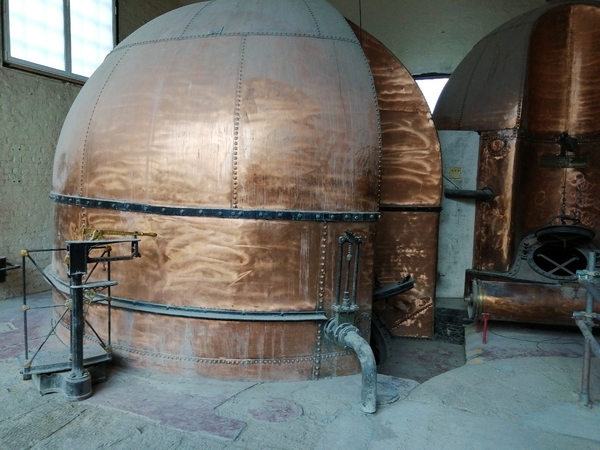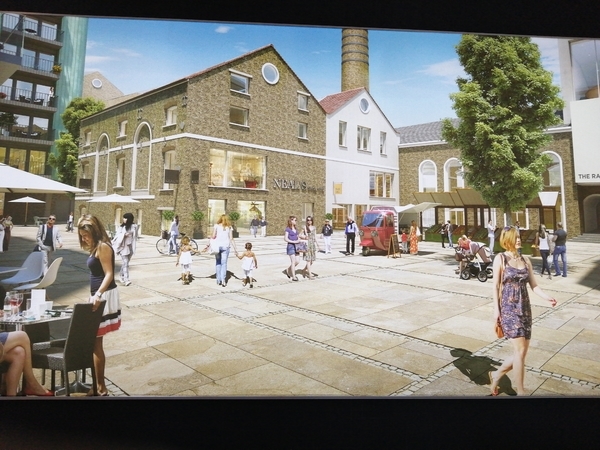Duncan Sambrook is Young's at heart
Added: Friday, May 8th 2020

Duncan Sambrook will be the toast of London and further afield this year when he reopens the much-loved and much-missed Young’s Brewery site in Wandsworth in South-west London. Beer lovers have never recovered from the shock of Young’s closing in 2006 when new owners pulled down the shutters on centuries of beer making dating back to the reign of the first Elizabeth.
Such revered beers as Young’s Ordinary – which was far from ordinary – and Special Bitter are still brewed and supplied to Young’s pubs by Marston’s. But the beers lack the history and atmosphere that was part of their appeal.
In 2008 Duncan Sambrook gave up a career in the City to fill part of the yawning gap left by Young’s when he opened his brewery in Battersea. He loved Young’s beer and was keen to restore brewing to the area. Young’s had been a true icon. Back in the 1960s and 70s, under its ebullient chairman John Young, the company had refused to go down the keg route and remained true to cask beer.
John Young was derided at the time by fellow brewery owners, but he had the last laugh. The “real ale revolution” of the 1970s, when CAMRA was formed, saw cask beer bounce back. Beer lovers beat a path to the Ram Brewery to marvel at the traditional brewing vessels, the giant horses that pulled drays through the streets to deliver to local pubs, the belligerent ram mascot and the famous Sample Room where Bitter and Special could be tasted fresh and bouncing with ripe malt and hop character.
And when visitors left the brewery, there were a dozen palatial Young’s pubs in the vicinity where further sampling could continue.
Both the history and the beer seemed lost when, following the death of John Young, directors from outside the family closed the brewery and turned the company into a pubco. Young’s beers moved to Charles Wells in Bedford where the Eagle Brewery was sold to Marston’s in 2017.
Now Duncan Sambrook is restoring brewing at the Ram. The sprawling old brewery, dominated by its tall and imperious chimney, is now called the Ram Quarter. The 7.7 acre site has shops, small businesses and 300 apartments -- but the centrepiece will be the new brewery.
Duncan has raised £1.5 million to develop a complex that will include a brewery, a tap room and a museum. The museum will include many of the old vessels from Young’s, including the enormous coppers where malt and hops were boiled and the equally large beam engines that once provided the power to drive the entire brewing process. The engines will be run once or twice a year.

The brewery site is Grade II-listed and pays homage to Victorian design and engineering. Great iron beams and stanchions hold up the large rooms once occupied by mash tuns, coppers (above) and open square fermenters. The former cooperage, where oak casks were built and repaired, will house a new maturation area for Sambrook’s while the mezzanine will be home to the new brew house.
Duncan Sambrook’s involvement with Young’s comes from his love of beer and his distress when Young’s closed. He worked for the global accountancy group Deloitte in the City of London where his job was to help new companies float on the Stock Exchange so he had the essential, hard-nosed experience to create a brewery.
“As well as a love of beer, I enjoyed working with small companies. I saw the passion of small entrepreneurs and wanted to set up my own business,” he says.
He had never brewed before but he went to the Otter and Stonehenge breweries for work experience and also had the good fortune to link up with David Welsh. Welsh had helped found the Ringwood Brewery in Hampshire in 1978 with Peter Austin. Ringwood was one of the first of the new-wave small breweries and Austin, who was known as the Father of Micro-brewing, went on to set up new plants in the United States, Europe and even China.
“Ringwood was my model,” Duncan says. “Wandle Ale is based on Ringwood Best, not Young’s Bitter. David Welsh told me to focus on quality. All our main beers are around 3.8 to 4.2 per cent, which was the trend at the time, though strengths are going up again. I wanted really drinkable, session beers, not too bitter.
“The brewing kit for the Ram site has been built in China but it will be a traditional ale brewery, based on a mash tun and copper system rather than the modern mash mixer, lauter tun and brew kettle method. But I will use conical fermenters and will be able to add lager at some stage.”
The main beers will continue to be the best-selling Wandle Ale, along with Pumphouse Pale Ale, Junction Ale and Powerhouse Porter. Wandle Ale celebrates the River Wandle that runs through the borough and gave its name to Wandsworth.
The new brewery will have an annual capacity of 12,000 barrels and will be able to carry out 15-barrel batches six times a day. In keeping with the traditions of Young’s, Wandle is brewed with England’s finest malting barley, Maris Otter, along with Boadicea, Fuggles and Goldings English hops.
Duncan is splitting his business into two departments, with transport on a separate site. This will allow for expansion at the Ram, where he is confident brewing will grow by 60 per cent over the next few years. As well as his own brands, Duncan has contracts with other companies, including Brands Reunited that has the rights to the trademarks and recipes for another long gone London brewery, Watneys. Watneys had such a bad reputation in the 1970s for its abysmal keg beer Red Barrel that it’s something of shock to sample a cask version of Watneys Pale that’s hoppy and delicious. More Watney’s beers may be brewed in keg as well as cask.
Sambrook’s draught beers are sold to the free trade within the M25 but Duncan has built a solid export sector with his packaged beers. He sells to France, Italy, Hong Kong, Singapore and mainland China. He says the Chinese especially like his Imperial Russian Stout, which shows they have good taste as the 10.4 per cent bottle-conditioned beer is superb.
Duncan employs 22 people, some of them former Young’s employees, who brew, package and deliver the beers. The senior brewer is Darryn Grimsley from South Africa who Duncan describes as “very technical” – a useful attribute.
Duncan’s plans for the future include building a small estate of pubs, with a showcase outlet in Wandsworth. He wants a community-based brewery and pubs business in the style of John Young who knew the names of all the landlords and landladies in his estate of 200 pubs.
In keeping with John Young, Duncan is bullish about cask beer. “Cask is craft!” he says firmly. “Cask has gone through a dip but it has a good future. It’s what attracts people to pubs. Quality is the key and you need good publicans who understand it and look after it.”
The tap room at the Ram will offer food as well as beer and there will be regular outdoor events, such as beer and music festivals, in the central square of the Ram Quarter.
“The museum will tell the history of brewing in London,” Duncan says, “but the emphasis will be on Young’s – brewing has been going on here since 1533.” And once brewing starts, Duncan is keen to maintain the historic presence of brewing at the Ram.
“I aim to be on this site for 30 years,” he says with quiet determination.
•Brewing has not stopped at the Ram brewery, even though Young’s closed in 2006. John Hatch has run a nano-brewery, the Phoenix, in the old stable block. The beers are not for sale but visitors can sample them and place cash in a charity box. John will eventually move to the new museum, which he will run alongside conducting tours for visitors.
This means brewing has been maintained on the site since the 16th century. It started as the Ram Inn and grew into a large commercial brewery alongside the Wandle. The Young family arrived in 1831. Young’s and its successors claim it’s the oldest, continuously working brewery in Britain. Shepherd Neame in Faversham, Kent, which dates from 1698, says it’s the oldest family brewery still in operation. In common with the dispute over which is Britain’s oldest pub, this is an argument that will rumble on.
•Below, artist's impression of the Ram Quarter, with the brewery chimney across the square.







